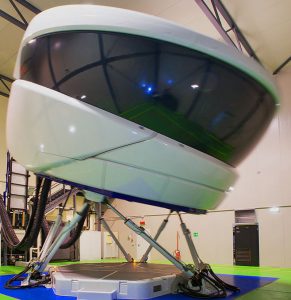10 Interesting Facts About Spax X
 SpaceX has become the most influential company in the space industry. Its bold ambitions and technological innovations have captivated the world. Since its founding in 2002, SpaceX has made incredible strides in space exploration and commercial spaceflight. Here are 10 interesting facts that highlight the company’s remarkable achievements.
SpaceX has become the most influential company in the space industry. Its bold ambitions and technological innovations have captivated the world. Since its founding in 2002, SpaceX has made incredible strides in space exploration and commercial spaceflight. Here are 10 interesting facts that highlight the company’s remarkable achievements.
1) SpaxX’s founding and vision
SpaxX was founded by Elon Musk in 2002 with the vision to reduce space transportation costs. Musk’s ultimate goal is to make space travel more affordable and accessible. He also aims to enable the colonization of Mars. SpaceX’s vision focuses on making humanity a multi-planetary species.
Elon Musk invested a significant amount of his personal wealth to fund SpaceX in its early years. This initial investment allowed the company to develop cutting-edge technologies that would later change the space industry. SpaceX’s focus on innovation has continually pushed the boundaries of what is possible in space exploration.
2) The 1st privately funded company to reach orbit
SpaceX achieved a historic milestone in 2008 with the Falcon 1 rocket. This was the 1st privately funded rocket to reach orbit. The successful launch of Falcon 1 placed SpaceX at the forefront of commercial space exploration. It demonstrated that private companies could develop reliable space vehicles.
The Falcon 1’s success was a key turning point in the history of spaceflight. It proved that the private sector could be a significant player in the space industry. SpaceX’s achievement attracted attention from both governmental and commercial entities, opening up new opportunities for private space missions.
3) Reusable rockets
SpaceX’s most groundbreaking innovation is its reusable rocket technology. The Falcon 9 rocket, for example, can land back on Earth after launch. This reusability significantly reduces the cost of launching payloads into space. SpaceX’s commitment to this technology has revolutionized the space industry.
In 2015, SpaceX successfully landed the first stage of its Falcon 9 rocket on solid ground. This was the first successful recovery of a rocket after a space mission. Since then, SpaceX has made hundreds of successful landings on both solid ground and drone ships at sea. The company has continued to refine its reusable rocket technology, setting a new standard for space missions.
4) The Falcon Heavy
In 2018, SpaceX launched the Falcon Heavy, the most powerful operational rocket in the world. The Falcon Heavy is capable of lifting nearly 64 metric tons into low Earth orbit. This makes it more powerful than any other operational rocket, including the Saturn V used in the Apollo missions.
The Falcon Heavy’s debut launch was a major milestone for SpaceX and space exploration. It carried Elon Musk’s personal Tesla Roadster into orbit as part of a test mission. The successful launch demonstrated the Falcon Heavy’s potential to carry large payloads into space, including satellites, cargo, and crewed missions.
5) SpaceX’s Starship project
SpaceX is working on developing the Starship, a fully reusable spacecraft designed for deep space missions. Starship is intended to carry both crew and cargo to destinations like Mars. It will have the ability to transport up to 100 passengers on long-duration trips. This project is central to SpaceX’s goal of colonizing Mars.
Starship is powered by the Raptor engine, designed for maximum efficiency. The spacecraft’s stainless steel design is capable of withstanding the extreme heat and pressure of re-entry. SpaceX plans to use Starship for interplanetary travel, as well as missions to the Moon and beyond. The Starship project represents the company’s long-term vision to transform space travel.
6) NASA and SpaceX partnership
SpaceX has forged strong partnerships with NASA, working together on multiple projects. In 2020, SpaceX became the first private company to send astronauts to the International Space Station with its Crew Dragon spacecraft. This historic mission marked the beginning of a new era for private space companies.
NASA has also relied on SpaceX to transport cargo and supplies to the ISS. SpaceX’s Dragon spacecraft has been an integral part of NASA’s resupply missions. These collaborations demonstrate SpaceX’s growing reliability and capability in the space industry. Through its partnership with NASA, SpaceX has gained global recognition and expanded its role in space exploration.
7) Dragon capsule
The Dragon capsule is SpaceX’s key technology for transporting cargo and crew. It is designed to carry cargo to the ISS and return to Earth safely. The Dragon capsule can carry both pressurized and unpressurized cargo. Its design allows for the safe delivery and return of critical supplies to and from space.
In addition to its cargo capabilities, the Dragon capsule can also transport astronauts. In 2020, it carried NASA astronauts Robert Behnken and Douglas Hurley to the ISS. The Dragon capsule is a cornerstone of SpaceX’s missions, continuing to play a pivotal role in both commercial and government space missions.
8) SpaceX’s Starlink Internet Service
SpaceX is developing Starlink, a global satellite-based internet service. Starlink aims to provide high-speed, low-latency internet to underserved and remote areas around the world. The service relies on a network of low-Earth orbit satellites to deliver internet access. As of 2023, SpaceX has launched thousands of satellites for the Starlink network.
Starlink has the potential to revolutionize internet access, particularly in regions where traditional broadband infrastructure is lacking. The service is already available in several countries, offering fast and reliable internet. Starlink’s success could change the global telecommunications landscape and provide a sustainable revenue stream for SpaceX.
9) 1st Commercial crew launch
In 2020, SpaceX achieved another significant milestone with the 1st commercial crew launch to the ISS. The Crew Dragon spacecraft carried NASA astronauts on the Demo-2 mission, marking the first time a private company had sent astronauts to the space station. This success further solidified SpaceX’s position as a leader in space transportation.
The successful launch of Crew Dragon demonstrated the company’s ability to safely transport crew members to space. It also marked the end of NASA’s reliance on Russian Soyuz spacecraft for crew transport. With this milestone, SpaceX has taken on a major role in the future of human space exploration.
10) SpaceX’s commitment to sustainability
SpaceX is focused on sustainability in both its operations and its goals for the future. Reusable rockets are one of the key ways the company is reducing space mission costs and environmental impact. The company’s goal is to make space travel as sustainable as possible. With the development of Starship, SpaceX aims to create a spacecraft that is fully recyclable.
The company also works to minimize the environmental impact of its rocket launches. SpaceX has taken steps to reduce emissions from rocket engines and minimize waste during launches. As the company continues to develop new technologies, its commitment to sustainability will be crucial for the future of space exploration.
Shaping the future of space exploration
SpaceX has changed the way the world thinks about space exploration. Its commitment to innovation, reusability, and sustainability has disrupted the traditional space industry. The company’s achievements, from the first privately funded orbit to sending astronauts to the ISS, have set new standards for space missions.
SpaceX’s vision of making space travel more affordable and accessible is becoming a reality. As the company continues to develop new technologies like Starship and Starlink, it is paving the way for the future of space exploration. With its growing influence and groundbreaking achievements, SpaceX will remain a key player in the evolution of space travel.










